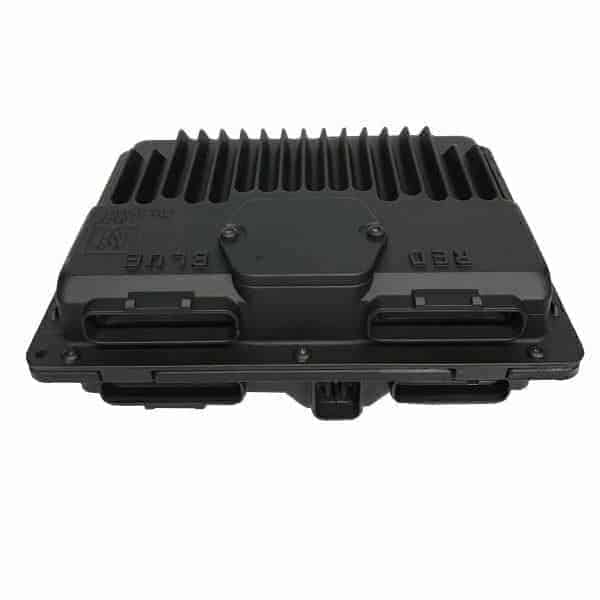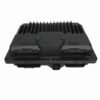Restore Your Vehicle’s Core Performance and Reliability
If you’re dealing with frustrating engine problems in your 1998 GMC Safari or another compatible GM vehicle, a failing Powertrain Control Module (PCM) is often the hidden culprit. As a mechanic with over two decades of diagnostic experience, I’ve seen firsthand how a faulty PCM can cause a cascade of issues that seem unrelated—from mysterious stalling and rough idling to poor fuel economy and a persistent Check Engine Light. This isn’t just an inconvenience; it’s a core operational failure that needs a reliable solution.
This is a dependable, tested, and used OEM Powertrain Control Module, part number 16266645. The most significant benefit we offer is that this module arrives at your door completely programmed to your vehicle’s specific Vehicle Identification Number (VIN). We flash it with the latest official GM software updates, ensuring it communicates perfectly with your engine, transmission, and all related systems right out of the box. This eliminates the need for an expensive trip to the dealership for programming, saving you both time and money.
Case Study: A Tricky Diagnosis
A customer brought in a ’99 Chevy Suburban with a classic complaint: intermittent stalling at stoplights and terrible gas mileage. They had already replaced the throttle position sensor and the idle air control valve, but the problem persisted. After hooking up my scan tool, I noticed erratic data from multiple sensors, but no hard codes pointing to a single component. This is a tell-tale sign. In my shop, I’ve learned that when multiple, unrelated sensors start acting up, the problem is often the central computer that’s reading them. We swapped in a programmed PCM, and the truck immediately ran like new. The original PCM’s internal voltage regulation had failed, corrupting the data it was processing. This part solved a problem that had cost the owner hundreds in incorrect repairs.
Is Your GM Truck or Van Showing These Signs?
A failing PCM doesn’t always trigger a specific code. Look out for these common symptoms that point to a computer issue:
- ✔ Check Engine Light is on, often with codes like P0601 (Internal Control Module Memory Check Sum Error) or P0606 (PCM Processor Fault).
- ✔ The engine cranks but refuses to start.
- ✔ Unexplained drops in fuel economy.
- ✔ Rough or unpredictable engine idling.
- ✔ Harsh or erratic automatic transmission shifting.
- ✔ The vehicle stalls for no apparent reason, either while driving or at a stop.
- ✔ Communication errors with your OBD-II scan tool.
A Straightforward Guide to Installation
Installing your pre-programmed 1998 GMC Safari PCM is a manageable job for a confident DIYer. Follow these steps carefully to ensure a smooth process.
- Safety First: Always disconnect the negative terminal from your vehicle’s battery and secure it away from the post to prevent any accidental reconnection.
- Locate the PCM: On the 1998 GMC Safari and Chevy Astro, the PCM is typically located in the engine compartment on the driver’s side, near the battery. On other trucks and vans, it’s usually on the driver’s side inner fender.
- Disconnect the Harnesses: Carefully unplug the electrical wiring harnesses connected to the old PCM. These connectors have locking tabs that may need to be squeezed or lifted to release. Do not force them.
- Remove the Old Module: Unbolt the old PCM from its mounting bracket. Keep the hardware, as you may need it to install the new unit.
- Install the New PCM: Mount your new, pre-programmed PCM onto the bracket and securely reconnect the wiring harnesses. You should hear a ‘click’ as they lock into place.
- Reconnect the Battery: Reattach the negative battery terminal and tighten it securely.
- Perform Security Relearn (If Needed): Some GM vehicles of this era require a simple security relearn procedure. Typically, this involves turning the key to the ‘ON’ position for 10-15 minutes, then ‘OFF’ for 10 seconds, and repeating this cycle three times. Your vehicle’s service manual will have the exact procedure.
Verified Vehicle Compatibility
This module, identified by service number 9355699, is a direct replacement for part number 16266645 and several others. It fits a wide range of GM trucks, vans, and SUVs. Please match your part number or ID to ensure compatibility. This part fits:
CHEVROLET BLAZER S10 98 (RH front engine compartment)
OLDSMOBILE BRAVADA 98 (6-262, 4.3L)
CADILLAC ESCALADE 99 (LH front engine compartment)
GMC ENVOY 98 (RH front engine compartment)
CHEVROLET EXPRESS & GMC SAVANA VANS 1500/2500/3500 98-99
ISUZU HOMBRE 98 (4.3L)
GMC JIMMY S15 98 (RH front engine compartment)
CHEVROLET & GMC PICKUPS 1500/2500/3500 98-99 (Gasoline)
GMC SAFARI 98 (LH front by battery)
GMC S15 SONOMA & CHEVROLET S10 98 (6-262, 4.3L)
CHEVROLET SUBURBAN 1500/2500 98-99 (Gasoline)
CHEVROLET TAHOE & GMC YUKON 98-99 (Gasoline)
Why do you need my VIN?
Your VIN is essential for us to program the Powertrain Control Module with the correct software for your vehicle’s specific engine, transmission, and options. This ensures it works perfectly upon installation without needing a trip to the dealer.
Is this a new part?
No, this is a thoroughly tested, genuine OEM part sourced from a salvaged vehicle. This provides OEM reliability at a fraction of the cost of a new unit.
Will I need to do anything else after installation?
After installing the PCM and reconnecting the battery, some GM vehicles may require a simple security relearn procedure to sync the module with your vehicle’s anti-theft system. This procedure is easy to perform and instructions can be found online or in your service manual.
What if my part number is slightly different?
This module replaces several part numbers, including 09355699, 16250279, and 16258815. As long as your vehicle is on the compatibility list and your original module has one of the listed interchangeable part numbers, this part will work for you.
How do I provide my VIN?
After you complete your purchase, you will need to send us a message with your 17-digit VIN. We cannot ship your order until we receive this information, as the programming is a critical step.



